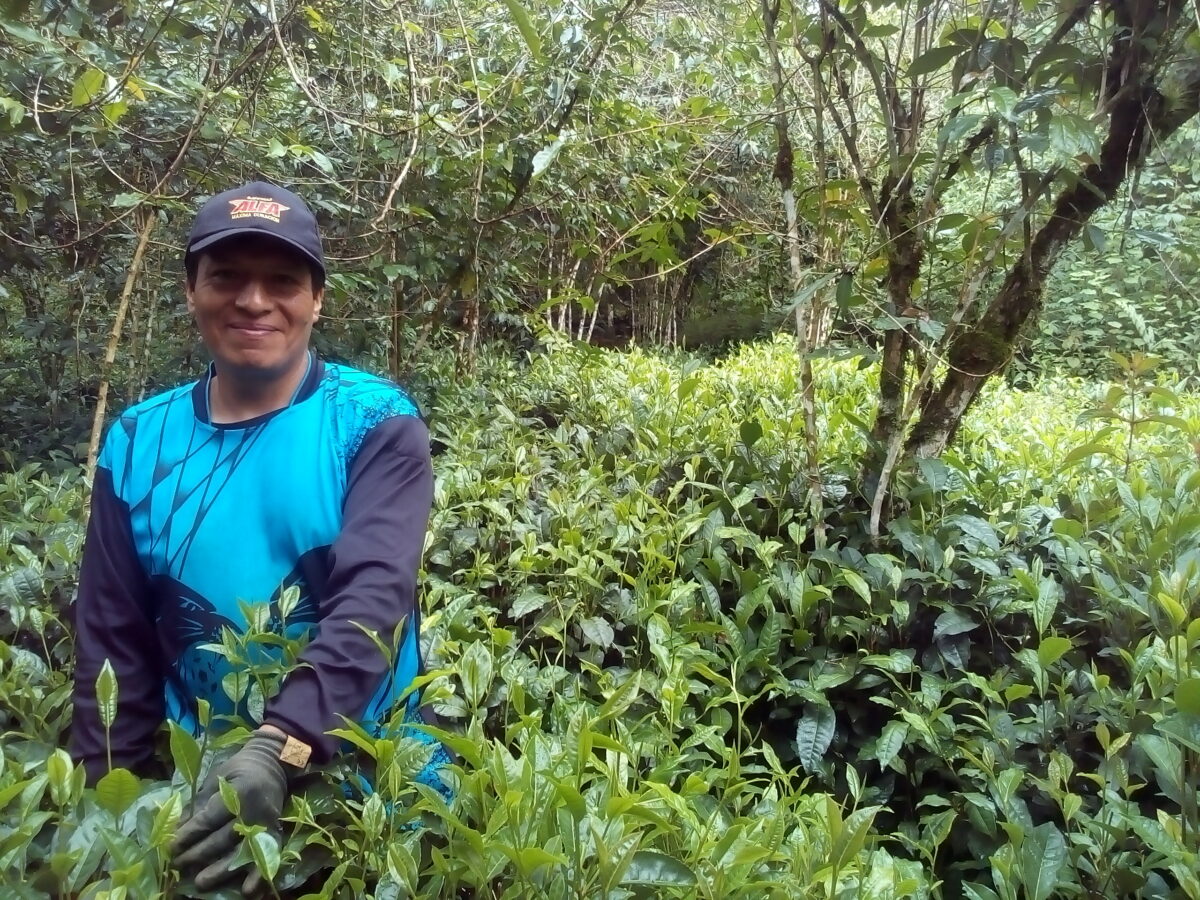
Peru developed a taste for green tea that dates to 1913.
A hundred years later, in 2014, Germán Povea and his partner, Alcira, made their first special green tea in the Huayopata district in the La Convención province at Cusco. Germán collaborated with Edilberto Cuba and Américo Cuba, both tea authorities in the district. Today, Germán has plantations in Yanayaco and, Choquello Huanca, Huayopata, with Camellia sinensis and Assamica hybrids.
Germán produces artisanal teas, and his market is 30% export, with 70% sold to specialized stores in Peru. He makes black, green, white, and powdered green tea (matcha).
“Povea Id, with its Callité brand, was the first to develop and produce specialty teas in Peru, and consequently, Peruvian tea has begun to gain recognition both nationally and internationally, but its positioning is still a work in progress compared to other traditional drinks in the region,” said Germán.
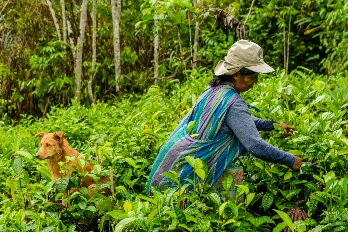
In Peru, tea does not have the same deep-rooted cultural tradition as coffee or coca mate. However, it is gaining popularity, especially in urban areas and among consumers interested in healthy alternatives. Native herbal teas, such as linden and chamomile, have a significant presence in the local market. An increase in demand for natural and organic products favors Peruvian tea. Local brands are beginning to take advantage of this interest by offering teas that highlight the country’s biodiversity and botanical heritage.
Although Peru is not one of the leading tea producers in Latin America, local production is growing. Local companies have tried to develop and process high-quality tea, highlighting varieties such as black and green tea. There is also interest in the cultivation of exotic and organic teas.
Green beginning
Tea seeds from Japan entered the country in 1913 following negotiations with the Peruvian consul in Yokohama, Francisco A. Loaysa. It saw the arrival of 120 pounds of seeds that were brought on the steamship Anyo Maru. Senator Benjamin De La Torre first cultivated tea on his Huyro farm in Cusco. The main tea-growing regions are located in the northern and central highlands, where the climate and altitude support cultivation.
The historical development continued with the arrival of experts from Ceylon (Sri Lanka), with the commercial planting of assamica in addition to the sinensis plants that had arrived from Japan the previous decade. Years later, the cultivation was extended to Cusco and Huánuco, with more than 16,000 plants of selected varieties. By 1941, there were about 800,000 plants in Huánuco, leading to the setting up of the first black tea factory. Huyro soon followed.
Today, a new generation is exploring tea production, choosing artisanal styles for a regional market. Peru’s output reaches 3,307 tonnes per year and cultivates 2,080 hectares (Peruvian Commission for the Promotion of Exports and Tourism).
Pioneering an artisanal movement
Internationally, Peruvian tea has not yet made a mark in the global market. Competition in the tea market is fierce, with countries like China, India, Japan, Kenya, and Sri Lanka dominating. However, with the growing interest in specialty and organic teas, some Peruvian producers are beginning to gain recognition at international fairs and through quality certifications. While Peruvian tea exports are rising, they still represent a small fraction of the global market. In 2022, Peru exported tea worth $14.4 million, ranking as the 39th largest tea exporter worldwide.
Producers are working to establish business relationships and improve quality to compete with other international teas. Target markets include the United States, Europe, and neighboring countries in Latin America. Peruvian producers try to differentiate their teas by highlighting the region’s geographical origin, organic cultivation, and sustainable production methods. The marketing strategy for Peruvian tea internationally focuses on highlighting the biodiversity and unique properties of the native plants used. In addition, the emphasis on sustainability and fair trade also plays a vital role in marketing Peruvian tea.
Introducing Peru-erh
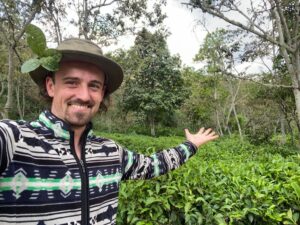
Jake Housdon was introduced to special tea “through a store in the shopping center near where I grew up, called Teaopia.” He is now a tea specialist and collaborates with Arafat Espinoza, owner of Runaq company: “RUNAQ has a certified organic plantation, an agroforestry type, which has several varieties of sinensis and assamica leaves. The sinensis originally came from Japan, and the assamica came from Sri Lanka. We produce artisanal teas for the specialized market but with a tremendous quality-price ratio. Offerings include green tea, with a vaporized aesthetic like the Japanese, an extraordinary black tea with notes of cocoa and malt, and white tea. We experiment by creating teas with a mixture of sinensis and assamica cultivars, which gives rise to very interesting flavors and body profiles. Recently, we pressed the first Pu Erh cake in Peru. Naturally, we call it Peru-Erh and we are very excited about its potential.”
“My goal with tea is to help this charming leaf and its divine nectar go from the Andes of Peru to the gaiwans and cups of the rest of the world. I am a well-soaked tea head. My soul is stained with tannins,” says Jake.
“My goal with tea is to help this charming leaf and its divine nectar go from the Andes of Peru to the gaiwans and cups of the rest of the world. I am a well-soaked tea head. My soul is stained with tannins.” Jake Housdon
Positioning Peru as an artisanal market
Rolando Landers was born in Huayopata 39 years ago and grew up hearing the story of Benjamin La Torre bringing the seeds of an “aromatic plant”, considered green gold, likely hidden in the handle of his cane. “When I was a child, I remember that on our first primary school graduation trip, the Te Huyro plant, which was the company that collected and processed 100% of the District’s leaf production, gave us lodging in Cusco and there I remember that the whole house smelled of tea, and in the garbage cans I found the little papers from the tea filters and they gave tea filters to all the children in the group.”
Today, Rolando owns two plots, one in a humid forest, which guarantees leaf production throughout the year. This plot is 10,000 m2; it is rented and used to make black and white tea, but he points out, “I am enabling an old plot with tea that belonged to my grandfather. This plot was abandoned, and therefore, it is totally organic. The tea produced in this plot is super special and is very good for green tea, therefore I am researching and looking for small plots to be able to have differentiated profiles with my brand. The varieties that are cultivated are the Camellia sinensis sinensis and the Camellia sinensis assamica, my grandfather’s plot is almost 5,000 m2.”
Rolando sells only artisanal whole-leaf tea to the local public at fairs and in the capital, Lima, through social networks. He offers three types of tea: black (a premium black tea and a specialty golden black tea), green tea, and white tea. “I hope one day to learn, develop, and perfect my technique for making tea, but the most ambitious thing I have is to one day be able to control each of the chemical processes that occur in tea during processing because only in this way could I have even batches that can be very well positioned in the market,” he says.
Rolando’s view of tea in South America is, “there is a process of deindustrialization of tea, this is positive since it raises the profile and complexity of tea and it is also an opportunity to be able to compete with competitive and comparative advantages. Likewise, tea-consuming countries such as England and France are very open to trying tea from new production areas, but we still need to be able to prepare ourselves to be able to access those markets. but it is only a matter of time before they look at this area and our teas gain reputation.”
Germán says, “Peruvian tea is on a trajectory of growth and improvement nationally and internationally. With an appropriate strategy emphasizing quality, authenticity, and sustainability, there is significant potential to increase its presence and prestige in the global market.”
Tea Market
Get More Value from Your Tea: BRU Maker One
+41794574278
Jacque's Organics
(647) 804-7263
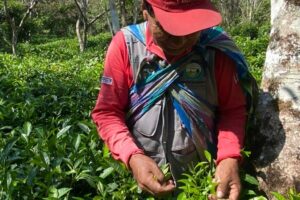
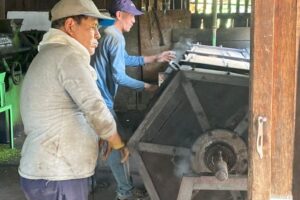
A very interesting read.
Also an eye-opener.
Hello Inda, thank you very much for your comment. Horacio
Informative article Horatio. I wish the tea producers in Peru well for their discovery of a unique hot beverage. I wonder what herbals or tisanes they drink from native plants?
Hello Paula, it’s great to hear from you. You should ask the Runaq company which plants they are working with. I hope to see you soon. Regards, Horacio.
Interesante y es de todos lo más ajustado a la realidad. Tengo algunos datos más para añadir…
Hola Alcira, muchas gracias por tus aportes, saludo
Very cool. How would one (in the US) go about trying these teas?
Hello, you must contact the Runaq company in Peru.